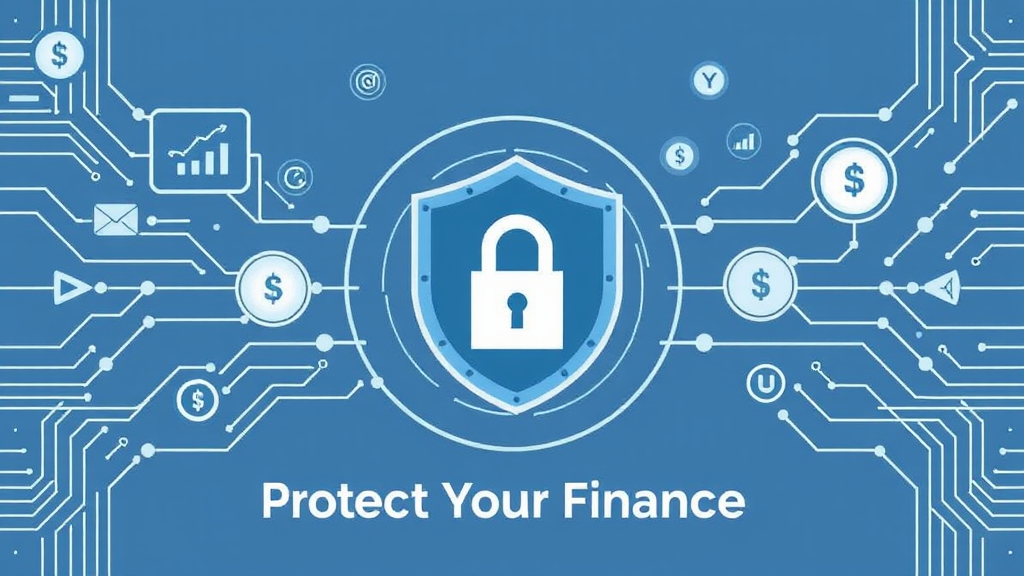Introduction to Cybersecurity in Finance
Importance of Cybersecurity in the Financial Sector
In the financial sector , cybersecurity is crucial for protecting sensitive data and maintaining trust. Financial institutions handle vast amounts of personal and financial information. This makes them prime targets for cybercriminals. Security breaches can lead to significant financial losses. They can also damage reputations. Trust is essential in finance. A single incident can erode customer confidence. Therefore, robust cybersecurity measures are necessary. They help safeguard assets and ensure compliance with regulations. Protecting data is a top priority.
Overview of Common Cyber Threats
Common cyber threats include phishing attacks and ransomware. These tactics often target financial institutions. Phishing involves deceptive emails that trick users. Many fall victim to these scams. Ransomware encrypts data, demanding payment for access. This can paralyze operations. Understanding these threats is vital. Awareness can prevent significant losses. Stay informed and vigilant.
Understanding Cryptocurrency Vulnerabilities
Types of Vulnerabilities in Cryptocurrency Systems
Cryptocurrency systems face varilus vulnerabilities, including smart contract flaws and exchange security issues. Smart contracts can contain coding errors that lead to exploits. These errors can result in significant financial losses. Exchange platforms are also susceptible to hacking attempts. Many users store assets on these platforms. This creates a target for cybercriminals. Understanding these vulnerabilities is essential for protection. Knowledge is power in finance.
Case Studies of Major Cryptocurrency Breaches
Several major cryptocurrency breaches highlight systemic vulnerabilities. For instance, the Mt. Gox hack resulted in the loss of 850,000 bitcoins. This incident exposed weaknesses in exchange security protocols. Many investors lost significant amounts of money. Another example is the Coincheck breach, where hackers stole $530 million in NEM tokens. Such breaches raise concerns about asset safety. Awareness is crucial for investors.
Best Practices for Securing Cryptocurrency Assets
Utilizing Hardware Wallets for Enhanced Security
Utilizing hardware wallets significantly enhances security for cryptocurrency assets. These devices store private keys offline, reducing exposure to online threats. This offline storage mitigates risks from malware and phishing attacks. Many investors prefer this method for safeguarding their holdings. Additionally, hardware wallets often feature advanced encryption. This adds another layer of protection. Security is paramount in cryptocurrency management.
Implementing Strong Passwords and Two-Factor Authentication
Implementing strong passwords is essential for securing cryptocurrency accounts. Complex passwords deter unauthorized access effectively. Additionally, two-factor authentication adds an extra security layer. This method requires a second verification step. Many users overlook this critical measure. Awareness can prevent significant financial losses. Security should always be a priority.
Regulatory Frameworks and Compliance
Overview of Global Regulations on Cybersecurity
Global regulations on cybersecurity are evolving rapidly. Various jurisdictions implement frameworks to enhance data protection. For instance, the General Data Protection Regulation (GDPR) in Europe sets stringent requirements. Compliance with these regulations is essential for financial institutions. Non-compliance can lead to severe penalties. Many organizations must adapt to these changing laws. Awareness of regulations is crucial for risk management.
Impact of Compliance on Financial Institutions
Compliance significantly affects financial institutions’ operations and strategies. Adhering to regulations ensures the protection of customer data. This builds trust and enhances reputation. Non-compliance can result in hefty fines and legal repercussions. Many institutions invest heavily in compliance programs. These investments are essential for long-term sustainability. Awareness of compliance requirements is vital for success.
Role of Blockchain Technology in Cybersecurity
How Blockchain Enhances Security in Financial Transactions
Blockchain enhances security in financial transactions through decentralization and transparency. Each transaction is recorded on a distributed ledger. This makes tampering nearly impossible. Key benefits include:
These features significantly improve trust among participants. Security is paramount in finance.
Challenges and Limitations of Blockchain Security
Blockchain security faces several challenges and limitations. Scalability issues can hinder transaction speed and efficiency. This may affect user experience negatively. Additionally, smart contract vulnerabilities can lead to significant financial losses. Many users overlook these risks. Furthermore, regulatory uncertainness complicates widespread adoption. Awareness of these challenges is essential. Understanding risks is crucial for informed decisions.
Incident Response and Recovery Strategies
Developing an Effective Incident Response Plan
An effective incident response plan includes several key components . These components are:
Each step is crucial for minimizing damage. Timely responses can significantly reduce losses. Awareness of procedures is essential for success.
Steps for Recovery After a Cyber Attack
Recovery after a cyber attack involves several critical steps. First, assess the extent of the damage. This evaluation helps prioritize recovery efforts. Next, restore affected systems from secure backups. This minimizes downtime and data loss. Additionally, conduct a thorough investigation to identify vulnerabilities. Understanding weaknesses is essential for future prevention. Continuous monitoring is vital during recovery. Awareness can prevent future incidents.
Future Trends in Cybersecurity for Finance
Emerging Technologies and Their Impact on Security
Emerging technologies significantly influence security in finance. Artificial intelligence enhances threat detection and response. This leads to quicker mitigation of risks. Additionally, blockchain technology improves transaction transparency. It reduces fraud and increases trust. However, these technologies also introduce new vulnerabilities. Awareness of these risks is essential. Continuous adaptation is necessary for security.
Predictions for Cybdr Threats in the Financial Sector
Predictions indicate an increase in sophisticated cyber threats. Attackers may leverage artificial intelligence for more effective phishing. This could lead to higher success rates. Additionally, ransomware attacks are expected to evolve. They may target critical financial infrastructure. Organizations must remain vigilant and proactive. Awareness is key to prevention.
Conclusion and Call to Action
Summary of Key Takeaways
Key takeaways emphasize the importance of cybersecurity. Financial institutions must adopt robust security measures. This includes utilizing hardware wallets and strong passwords. Additionally, awareness of emerging threats is crucial. Regular training can enhance employee vigilance. Proactive strategies can mitigate potential risks. Security is a continuous process.
Encouraging Vigilance and Continuous Learning
Encouraging vigilance is essential in cybersecurity. Continuous learning helps professionals stay informed. Regular training sessions can enhance awareness. This includes understanding new threats and mitigation strategies. Additionally, sharing knowledge within teams fosters a security culture. Proactive measures can significantly reduce risks. Awareness is key to protection.
